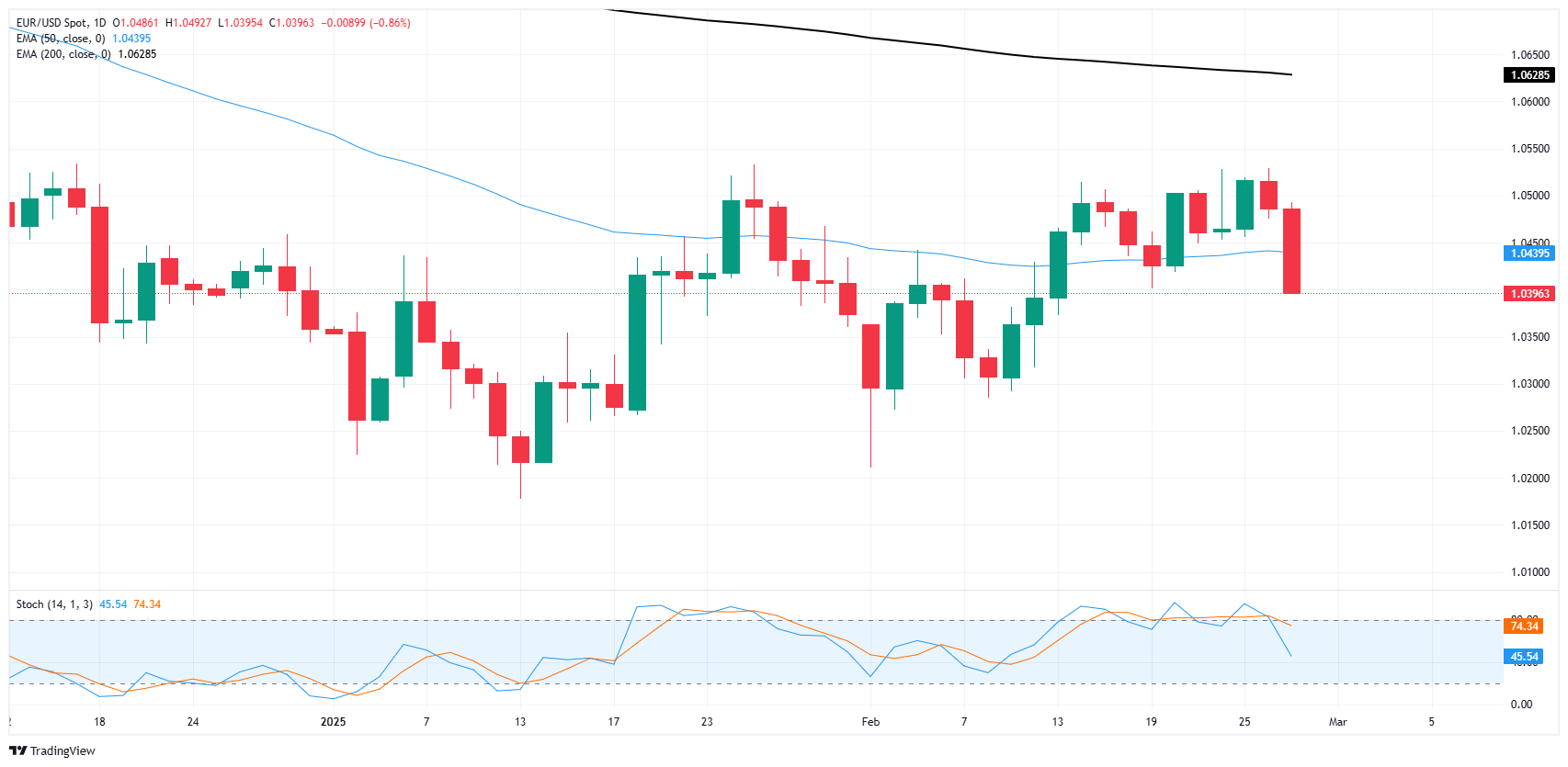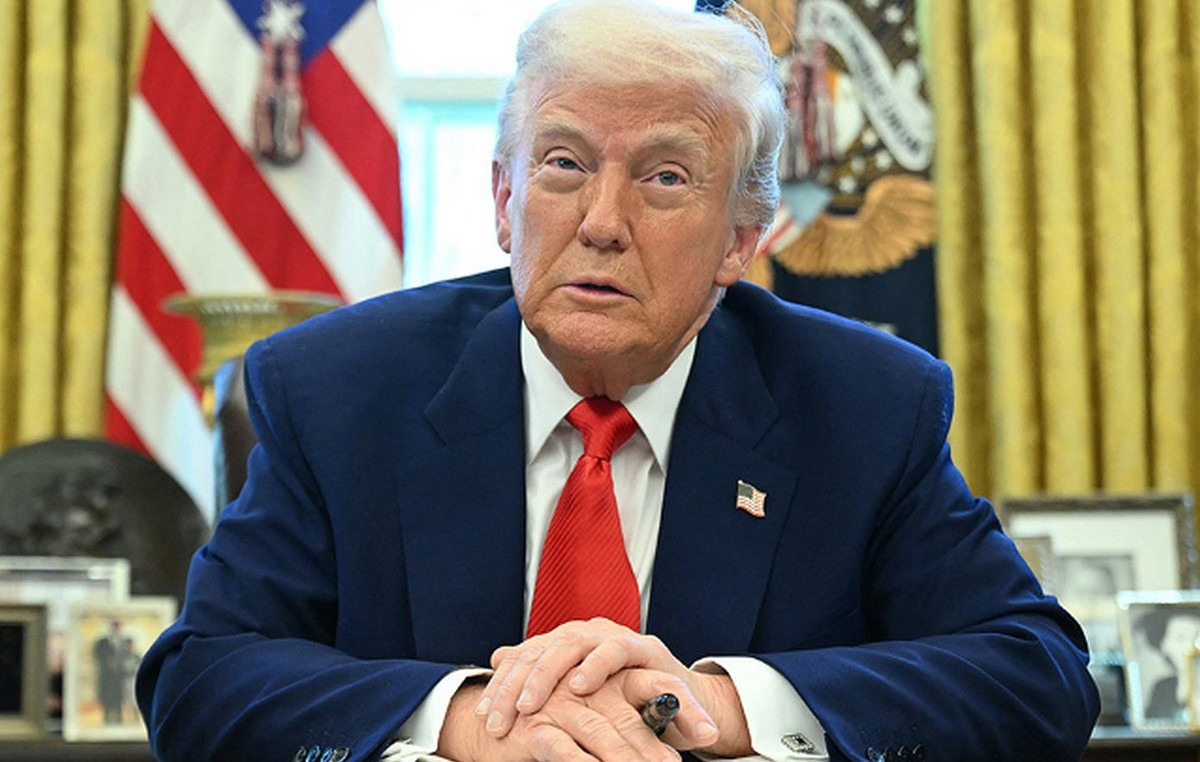- The EUR/USD fell 0.85% on Thursday after Trump reiterated tariff threats.
- The feeling of risk was affected after Trump changed his own timeline on tariffs.
- The US data also deteriorated, pointing towards a general slowdown and increasing inflationary pressures.
The EUR/USD took a step down on Thursday, falling almost nine tenths of one percent and retreating below 1,0400 for the first time in almost two weeks. A weak technical position in the Fiber Tar, and a new threat of American tariffs on European goods is weighing even more about offers, has been developing.
European tariff threats to the foreground
Hours after claiming that threatened tariffs would begin in April, US president Donald Trump surprised the markets by changing his opinion again on when he believes that he will impose import taxes to a wide range of the closest commercial partners of the US Starting on March 4.
In addition to the high tariffs aimed at nearby allies of the US, President Trump took the opportunity to inform his followers on social networks that Europe has treated the US “very badly” in commerce, possibly referring to the insistence of his administration that European added taxes (VAT) are a kind of tariff on US assets. More “reciprocal” tariffs continue to be planned that will enter into force in early April, with a lot of tariffs directed specifically to the EU.
US data suggest more inflation on the horizon
The growth of the US GDP for the fourth quarter exceeded forecasts, and spending on durable goods increased faster than expected in January. GDP grew by 2.4%intertrmetral, above the expectation of 2.2%, while the annualized figure remained stable at 2.3%.
The requests for durable goods fired an intermensual 3.1% in January, exceeding 2.0% expectations and recovering from a revised -1.8%. However, much of this increase results that companies are supplying before possible tariffs, and the increase in inflation may be artificially inflating the figures, raising future challenges. The increase in the orders of durable goods came mainly from the transport sector due to an increase in Boeing reserves and motor vehicles. Excluding these factors, orders remained planes at 0.0% in January, failing the 0.3% forecast and being below the 0.1% reviewed.
The US PCEPI inflation data is expected for Friday. Thursday’s preview suggests an unfavorable perspective for investors who expect the recent increase in general inflation to be temporary. The integrametral underlying PCE rose to 2.7%, above the expected 2.5%.
EUR/USD price forecast
The fall of the EUR/USD on Thursday places the Fiber again on the bearish side of the 50 -day exponential mobile average (EMA) in 1,0444, pushing the intradic offers back below 1,0400. The impulse has changed dramatically to bassist, and the price action is ready for an extended fall to the last minimum near the 1,0300 zone.
EUR/USD daily graphics
Euro Faqs
The euro is the currency of the 19 countries of the European Union that belong to the Eurozone. It is the second most negotiated currency in the world, behind the US dollar. In 2022, it represented 31 % of all foreign exchange transactions, with an average daily business volume of more than 2.2 billion dollars a day. The EUR/USD is the most negotiated currency pair in the world, with an estimate of 30 %of all transactions, followed by the EUR/JPY (4 %), the EUR/GBP (3 %) and the EUR/AU (2 %).
The European Central Bank (ECB), based in Frankfurt (Germany), is the Eurozone reserve bank. The ECB establishes interest rates and manages monetary policy. The main mandate of the ECB is to maintain price stability, which means controlling inflation or stimulating growth. Its main tool is the rise or decrease in interest rates. Relatively high interest rates (or the expectation of higher types) usually benefit the euro and vice versa. The GOVERNMENT BOOK of the ECB makes decisions about monetary policy in meetings that are held eight times a year. The decisions are made by the directors of the National Banks of the Eurozone and six permanent members, including the president of the ECB, Christine Lagarde.
Eurozone inflation data, measured by the harmonized consumer prices index (IPCA), are an important economic indicator for the euro. If inflation increases more than expected, especially if it exceeds 2% of the ECB, it forces the ECB to rise interest rates to control it again. Relatively high interest rates compared to their counterparts usually benefit the euro, since they make the region more attractive as a place for global investors to deposit their money.
Published data measure the health of the economy and can have an impact on the euro. Indicators such as GDP, manufacturing and services PMIs, employment and consumer trust surveys can influence the direction of the single currency. A strong economy is good for the euro. Not only attracts more foreign investment, but it can encourage the ECB to raise interest rates, which will directly strengthen the euro. Otherwise, if economic data is weak, the euro is likely to fall. The economic data of the four largest economies in the euro zone (Germany, France, Italy and Spain) are especially significant, since they represent 75% of the economy of the euro area.
Another important fact that is published on the euro is the commercial balance. This indicator measures the difference between what a country earns with its exports and what you spend on imports during a given period. If a country produces highly demanded export products, its currency will gain value simply by the additional demand created by foreign buyers seeking to buy those goods. Therefore, a positive net trade balance strengthens a currency and vice versa in the case of a negative balance
Source: Fx Street
I am Joshua Winder, a senior-level journalist and editor at World Stock Market. I specialize in covering news related to the stock market and economic trends. With more than 8 years of experience in this field, I have become an expert in financial reporting.







